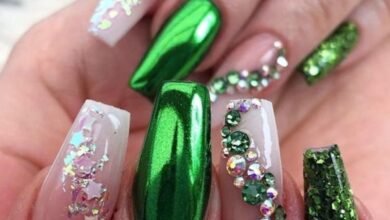ज्ञानवान का अर्थ क्या होता है व कैसे बने Gyanvaan

आपने कई बार कुछ ऐसे शब्द सुने होंगे जैसे की गुणवान धनवान चरित्रवान और ज्ञानवान(gyanvaan) आदि परंतु बहुत ही कम ऐसे व्यक्ति होते है। जिन्हें इन शब्दों के बारे में सही प्रकार से मालूम होता है।
आज हम आपकी इसी शंका को दूर करने के लिए नया ब्लॉग लेकर आए है। परंतु आज हम ज्ञानवान शब्द पर चर्चा करेंगे कि इसका अर्थ क्या होता है। यह शब्द कैसे बना और ग्यानवान किसे कहा जाता है। इस के पर्यायवाची क्या होते है। इसके विलोम शब्द क्या होते है और भी काफी कुछ आज हम इसके बारे में जानेंगे।
ज्ञानवान शब्द कैसे बना? | How “Gyanvaan” Formed?
यह शब्द दो शब्दों से मिलकर बना है। ज्ञान और वान जिसका अर्थ होता ज्ञान को धारण करने वाला व्यक्ति या वह व्यक्ति जिसके पास ज्ञान या knowledge हो |
वैसे ज्ञान एक संस्कृत का शब्द है। इसका शब्द का अर्थ आप ऐसे ही लगा सकते है। जैसे धनवान, धनवान वह व्यक्ति कहलाता है, जिसके पास धन की कोई कमी ना हो ऐसे ही ग्यानवान शब्द है। Gyanvaan वह व्यक्ति कहलाता है, जिसके पास ज्ञान की कोई कमी ना हो अब हम आगे ज्ञानवान शब्द के अर्थ के विषय में और अधिक चर्चा करेंगे।
“ग्यानवान” का अर्थ क्या होता है।? Gyanvaan ka kya arth hota hai? | What is the meaning of Gyaanvaan
इस संसार में सभी वस्तुओं की चोरी हो सकती है, परंतु ज्ञान की नहीं। अगर किसी व्यक्ति के पास ज्ञान ना हो तो उसे अपने जीवन में कई परेशानियों का सामना करना पड़ सकता है।
ज्ञानवान उसे कहते है, जो कुछ विषयों की पूरी जानकारी और सभी विषयों की कुछ न कुछ जानकारी रखता है अर्थात ज्ञान रखता है। ऐसे व्यक्ति को ग्यानवान कहते है।
या दूसरे शब्दों में हम यह कह सकते है, कि वह व्यक्ति जो देश-विदेश में चल रही घटनाओं की समझ, वर्तमान की पर्याप्त जानकारी रखता हो, अकलमंद हो, बुद्धिमान हो, ज्ञानी हो, हुनरमंद हो और सभी बातों का पर्याप्त ज्ञान रखता हो ऐसा व्यक्ति ग्यानवान कहलाता है।
व्यक्ति को Gyaanvaan होना क्यों जरूरी है?
संसार के हर व्यक्ति के पास ज्ञान होना अति आवश्यक है।| अगर व्यक्ति के पास ज्ञान नहीं है, तो वह व्यक्ति जीवन जी तो सकता परंतु उसके जीवन में कई प्रकार की परेशानियां होंगी जैसे कि कोई भी व्यक्ति उसे बेवकूफ या मूर्ख बना सकता है और वह व्यक्ति समझ भी नहीं पाएगा कि उसकी इन सारी परेशानियों का कारण क्या है। इसलिए संसार के हर व्यक्ति को यह प्रयास करना चाहिए कि वह व्यक्ति ग्यानवान बने और अपने जीवन का सफलतापूर्वक निर्वाह कर सके।
ज्ञानवान(Gyaanvaan) कैसे बने? How To be Gyanvaan
व्यक्ति के पास शिक्षा होनी चाहिए व्यक्ति पास ज्ञान होना इसलिए आवश्यक है, कि अगर व्यक्ति को जीवन जीना है, तो कोई नौकरी या व्यवसाय तो करना ही पड़ेगा और व्यक्ति नौकरी या व्यवसाय तब ही कर पाएगा जब उसके पास ज्ञान होगा इसीलिए संसार के हर व्यक्ति के पास ज्ञान होना चाहिए अगर व्यक्ति के पास ज्ञान नहीं है। तो व्यक्ति को ज्ञान अर्जित करना चाहिए ।
परंतु सबसे बड़ा प्रश्न यह है। कि आखिर ज्ञान को कैसे प्राप्त किया जाए हम आपको बता दें की ज्ञान प्राप्त करने की कोई उम्र नहीं है।| ज्ञान प्राप्त हर कोई कर सकता है बच्चे, जवान, बूढ़े.व्यक्ति तभी ग्यानवान कहलाएगा जब उसके पास ज्ञान हो। व्यक्ति को ज्ञानवान बनने के लिए बहुत सी किताबों की जानकारी प्राप्त करनी पड़ेगी। तभी व्यक्ति ग्यानवान बन पाएगा ।
परंतु यह हमेशा सत्य नहीं कि ज्ञान सिर्फ और सिर्फ किताबों से ही मिल सकता है या शिक्षा से ही मिल सकता है। यदि आपको ज्ञान प्राप्त करना है। तो आपको एक अच्छी संगति की भी आवश्यकता होगी आपको अपने समय को ज्ञानवान या ज्ञानी लोगों के साथ व्यतीत करना चाहिए और आपको उनके जीवन से प्रेरणा भी लेनी चाहिए।
अध्यात्म में ज्ञानवान(Gyanvaan) शब्द का अर्थ | What is the meaning of Gyaanvaan in spiritually
अभी हमने आपको बताया कि दैनिक जीवन में ग्यानवान शब्द का क्या अर्थ होता है। लेकिन आध्यात्मिक दुनिया में ज्ञानवान शब्द का कुछ अलग ही मतलब होता है। वह व्यक्ति ज्ञानी तो होता है। परंतु उस ज्ञान का अर्थ हमारे दैनिक जीवन से नहीं होता है। ना ही हमारे किताबी ज्ञान होता है। बल्कि उस ज्ञान का अर्थ ईश्वर से जोड़कर देखा जाता है। ऐसे ज्ञानी व्यक्ति को आत्मज्ञान की अनुभूति होती है।
अध्यात्म ग्यानवान का अर्थ उस व्यक्ति से लगाया जाता है। जिसने आत्मज्ञान को प्राप्त कर लिया हो | सीधे शब्दों में वह व्यक्ति जिसने आत्मज्ञान प्राप्त कर लिया हो उसे ग्यानवान कहा जाता है।
READ ALSO: Best Ganesh Shayari
ग्यानवान को English में क्या कहते है | Gyanvaan Meaning In English
ज्ञानवान को अंग्रेजी में या इंग्लिश में Knowledgeable कहते है। परंतु भिन्न-भिन्न संदर्भ में इसका अंग्रेजी शब्द बदलता रहता है। कुछ लोग ग्यानवान शब्द English में meaning “informed” भी बताते है।
हमने आपको ग्यानवान शब्द के अंग्रेजी में दो meaning बताएं आप अपनी आवश्यकता के अनुसार दोनों में से, जो आपको ज्यादा सही लगे, किसी का भी चुनाव कर सकते है।
ग्यानवान शब्द के English पर्यायवाची शब्द | Synonyms & Similar Words of Knowledgeable
- Informed
- Conscious
- Abreast
- Mindful
- Aware
- Acquainted
- Sensible
- Heedful
- Conversant
- Well-informed
- Versed
- Sentient
- Cognizant
ग्यानवान शब्द के English विलोम शब्द | Antonyms Words of Knowledgeable
- Ignorant
- Unfamiliar
- Uninformed
- Oblivious
- Unacquainted
- Unheeding
- Unconscious
- Unwitting
- Unaware
- Unknowledgeable
- Blind
- Unknowing
- Unmindful
- Insensible
- Inattentive
Gyaanvaan शब्द के हिंदी पर्यायवाची शब्द
- दूरदर्शी
- सूझ-बूझ वाला
- जानकार
- दृष्टिवंत
- ज्ञानयुक्त
- सज्ञान
- दूरदर्शक
- ब्रह्मज्ञानी
- सुविज्ञ
- समझदार
- ज्ञाता
- ज्ञानी
- जागृत
- ज्ञानप्राप्त
- विद्वान
- बुद्धिमान
ग्यानवान शब्द के विलोम शब्द
- निर्बुद्धि
- अल्पज्ञ
- बुद्धिहीन
- डपोरशंख
- नासमझ
- जड़मति
- मूढ़
- लल्लू
- जड़
- अल्पबुद्धि
- ज्ञानहीन
- अज्ञानी
- मंदबुद्धि
- गँवार
- जाहिल
- नादान
- अनाड़ी
- अक्खड़
- बेवकूफ़
- बुद्धू





